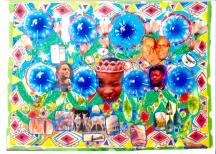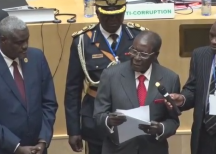Modern African literature was the child of a renaissance. The roots are to be found in the movement of revendication that began from Olaudah Equiano’s 18th century literary activism, to the work done in the Harlem renaissance in the early years of the 20th century, particularly embodied by two eponymous figures of that movement: the Jamaican Claude McKay, tortured and alienated, and the African-American, Langston Hughes, first discovering his roots on a difficult train-ride from Mexico, and b...read more
Modern African literature was the child of a renaissance. The roots are to be found in the movement of revendication that began from Olaudah Equiano’s 18th century literary activism, to the work done in the Harlem renaissance in the early years of the 20th century, particularly embodied by two eponymous figures of that movement: the Jamaican Claude McKay, tortured and alienated, and the African-American, Langston Hughes, first discovering his roots on a difficult train-ride from Mexico, and by which he resolved his conundrum through an embrace of Africa. He sang, “The Negro Speaks of Rivers.” Not for him the ambiguity or ambivalence of a Countee Cullen, who asks in a very laden tone, or in the pregnant rhetoric, “What is Africa to me?” Like Claude McKay’s Banjo, Langston Hughes The Weary Blues belted a jazzy affirmation of his debts both to sundered memory, and to the same blood that flows through the veins and rivers of Africa and its humanity. These two became the crossborder figures that helped to animate the conscious movement of ideas, that led Aime Cesaire and Leopold Senghor, and of course Alioune Diop, to construct “negritude” as a conscious act of self-reclamation: the bold and auspicious move to retrieve, from the cemetery of French assimilation, the identity of the African and the disaporadic scattering, wherever the spirit of the race found new fertile moorings: from the American South to Haiti; from Harlem to Martinique; from Cartegena, Colombia, to Havana, Cuba, and so on as so forth.
From the inspiration of negritude and the work of Presence Africaine, just at the cusp of decolonization, emerged the Black Orpheus magazine of the German-Yoruba, Ulli Beier, and the Mbari movement in Ibadan from 1957; and in 1961, the Transition magazine, published by that Indian Rajat Neogy, all inspired by the African possibility – a moment of renaissance, foregrounded by the inspiring work of the great African icons of pan-Africanism in the 20th century: Nnamdi Azikiwe, George Padmore, I. Akunna Wallace-Johnson, Kwame Nkrumah, Julius Nyerere, Kenneth Kaunda - such eponymous figures of modern African history, who dreamed, however the limitations of their later abilities, of a great African century; a century which Spengler had predicted belonged to Africa, given the enui of Europe exhausted by war and by its own linear modernity.



































